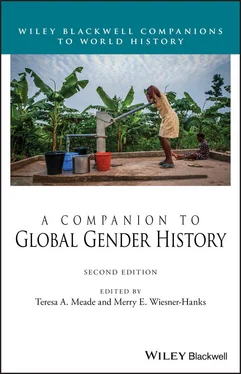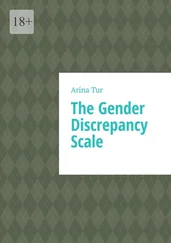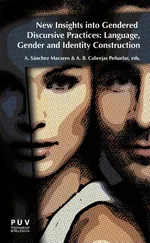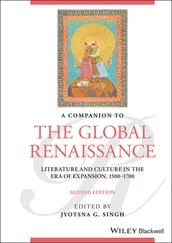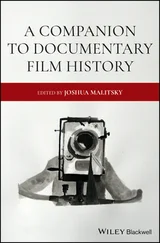This single item has an immensely interesting history beginning with its production to its eventual sale in an auction. Its value when Plath bought it as a trendy dress of its time changes as it becomes vintage for consumers in the twenty‐first century. As such it can be studied to tell us something about the fashions of the time when it was made as well as the values of contemporary times, when it is considered precious for being “old.” Using an idea developed by Leora Auslander, the object is polysemic in other ways too (Auslander, 2014: 7). For Plath, the mother, the frock was possibly a favorite piece from her wardrobe. For Frieda Hughes, the daughter, it was maybe an object of sentimental value. For the person who bought it in the auction it was maybe a symbol of a tragic female figure or perhaps just an investment. As we think about the “biography” of the garment we see also how the same thing can be important in different ways. The multidimensional nature of objects is precisely what makes them particularly rich as historical sources, but they have not always been valorized as useful objects of inquiry, especially not by historians. And readers of this volume know already that gender also was not always seen as a useful lens through which to understand our past. Thus, the intersection of scholars who study both material objects and pay attention to gender is fairly recent but also very important.
Social scientists of different stripes have used objects for diverse lines of inquiry, giving rise to what we today call “material culture studies.” Gender studies and material culture studies developed largely independently, but have in recent years mutually benefited from the theories and methodologies of the other. Before considering some of the ways in which the intersection of these two fields has been fruitful, it might be useful to know what exactly material culture studies entails, especially as it is practiced by historians. In the simplest of terms, a material culture history is one where the main sources that are being studied or investigated by the scholar are material objects; these can range from the most luxurious, such as a fine silk dress, to the commonplace, such as denim jeans. However, there can be works that are about silk or denim that do not take a material culture studies approach, meaning they do not necessarily study objects or make the materiality of the objects an important part of their investigation. For example, economic historians often study objects as commodities and they are interested in the quantities in which they were traded and their monetary value. In such scholarship, the materiality of the commodities is not usually a central feature. By contrast, historians who take the material culture approach will ask how the materiality of a silk dress differentiates it from other garments; a dress made of silk is not going to fall on the body in the same way as a dress made of cotton, for example. This vein of scholarship is also interested in what meanings were ascribed to objects and how they were used and/or adapted. 1
Asking questions about how and why a particular object was valued can tell historians about social relations, which is a question that guides gender historians as well. For example, a scholar looking at the consumption of silk garments in colonial North America might ask who could buy the silk and why would they buy it. Silk clothing is often associated with women and a scholar might investigate whether this has historically been true and why such an association exists. Scholars committed to the material culture approach also ask not only how society understands objects but also how society is shaped by the material world. In this, too, they have something in common with gender historians, who see gender not only as being shaped by society but as also reciprocally shaping society. Thus we can imagine that a meeting of the two methodologies of material culture studies and gender studies can be particularly fruitful for dissecting the construction of societal norms.
In what follows we will see the contribution the material culture studies approach has made to gender history. The first section will address the intersection of material culture studies and women’s history specifically. Gender studies and women’s history have a closely linked past and it is important to recognize that some of the scholars who have shaped and adopted the material culture studies approach were people who were especially interested in the histories and experiences of women (Batchelor and Kaplan, 2007; Goggin, 2017). Examples from the ancient site of Qumran in the West Bank, colonial North America, imperial China, and eighteenth‐century Britain will be used to illustrate the variety of ways in which objects can be used to investigate women’s history.
Another field of history where the material culture approach has been very important is in the study of consumption and the rise of consumerism, especially in Europe. The second section of this chapter considers the consumption of silk garments by women and men in the eighteenth century. Through the examples of specific styles of dress that women and men chose to wear, we see that consumption habits were shaped by prevailing ideas of femininity and masculinity, but also that the appearance of new types of objects helped create new notions of these gender identities. In connection with the previous section, by considering the habits of both women and men we also see that both genders contributed to the larger world economy of the time.
Taking a broad view of historiography, we see that an interest in what was being consumed also ushered in a renewed interest in how goods were produced, which is the focus of the third section of this chapter essay. Scholars have asked whether the production of objects is gendered, not only as in whether the people who made them were women or men, but also how the making of objects had an impact on gender identities. Historians of technology who are also interested in questions of gender ask whether machines, such as the bicycle, are gendered, or if it is the uses that we put them to that make them gendered? As we shall see, there is not one single answer to these questions. In this section we will also see how exploring the history of the production of a certain type of object, such as lace‐bark in the Caribbean, is revealing of the ways in which material production of objects could have a profound effect on the identity of a particular group.
The example of the history of lace‐bark production in the Caribbean is also an example of women’s history as well as an example of the history of consumption, which is again telling of the multiple layers of histories that objects can contain within them and the many ways in which they can be studied. The various examples of scholarship cited in this chapter show the breadth of possibilities material objects offer in the study of gender and its construction through time.
Women’s History and Material Culture Studies
One of the reasons that looking at material objects has been a fruitful avenue of research for historians is that it has allowed them to study the pasts of people who do not appear in textual sources, one such group being women. Historically and across cultures, literacy amongst women has been lower compared to men, which means women have not left many records that they wrote themselves. Even in official records they are not as visible as their male counterparts, which leaves historians in a difficult position if they want to know what women were doing in a particular time and place. And those who are not interested in the women’s experience might assume that they were absent or did not play a significant role.
A good example of the erasure of women from history when only textual documents are studied is the excavation of Qumran, the site in Palestine where the Dead Sea Scrolls were discovered. For a long time it was assumed that the site was home to a group of celibate men and that women were not present. This was based on a particular reading of textual sources, and these readings of the texts were then corroborated with the architecture that was excavated, which also appeared to lack any domestic space. However, comparing the site with other architecture of the period and closer analysis of the material objects that were found has challenged the presumption that there were no women in Qumran. Indeed it is believed that it was most probably a manor and not just a space for men to come to pray (Galor, 2014). This case highlights the primacy that was given to textual sources for historical research, even in the presence of material objects that might indicate something different from the texts. This bias towards textual sources led to the literal erasure of women from the scene. Had it not been for clues from surviving objects, the question of whether women could have been present in the space might not have ever risen.
Читать дальше
